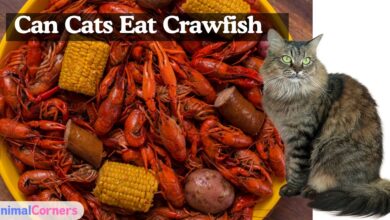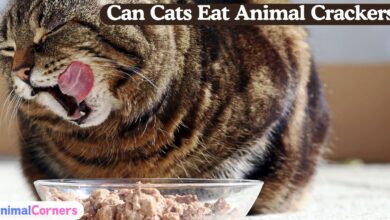How to Make Catnip Toys for Cats

Catnip toys have surged in popularity among cat owners, captivating felines and providing endless amusement. These toys offer more than just entertainment; they engage a cat’s natural instincts, fostering physical and mental stimulation. Creating homemade catnip toys is an excellent way to provide these benefits while being cost-effective and allowing for customization that suits your cat’s preferences.
For instance, making a catnip toy ball can be a fun DIY project, and understanding how to use catnip sticks can enhance playtime with your feline friend. While catnip sticks for cats are generally safe, being informed about potential catnip harmful effects ensures a joyful and worry-free experience.
Learn how to make catnip toys for cats using fabric scraps and dried catnip for endless fun and stimulation!
Observing a positive catnip reaction in cats is delightful, as they often exhibit behaviors like purring, rolling, or playing. Embracing the joys of homemade catnip toys can transform ordinary playtime into a captivating adventure for both you and your pet.
With our guide on how to make catnip toys for cats, you’ll learn to craft engaging toys that cater to your pet’s natural instincts, ensuring a fun and stimulating experience every playtime. At the end you will find online tutorials and videos for visual guidance.
What Do You Need to Make Catnip Toys?
Gathering Materials
When you’re ready to make your own catnip toys, you’ll first need to gather some basic supplies. This can be a fun activity that doesn’t require too many materials.
Essential Supplies
Here’s a simple list of materials you will need:
- Fabric: Choose a soft fabric like cotton, which is gentle and safe for your cat.
- Needle and Thread: Use these to sew the fabric together. If sewing isn’t your thing, fabric glue works too!
Types of Catnip
Catnip is the star ingredient for your project. It comes in different forms:
- Dried Catnip: This is the most common and can be found in pet stores or online.
- Catnip Plants: If you enjoy gardening, consider growing your own catnip!
Optional Add-ons
To make your toy even more exciting, you can add:
- Bells or Feathers: These can catch your cat’s attention and make playtime more engaging.
Eco-Friendly Choices
Think about using materials that are kind to the planet.
- Recycled Fabric or Organic Cotton: These options are sustainable and safe for your cat.
See Also:-Black Scottish Fold Cat: History, Origin, Characteristics and Common Queries About
How to Make Catnip Toys for Cats Easy? Design Ideas
Simple Catnip Ball
- Instructions on Creating a Basic Fabric Ball Filled with Catnip: To make a simple catnip ball, cut two circles from the fabric you chose. Sew the edges of the circles together, leaving a small opening. Turn the fabric inside out, fill it with dried catnip, and sew the opening shut.
- Tips on Sewing Techniques and Securing the Toy: Use small, tight stitches to ensure that the catnip stays inside the ball. If you’re using fabric glue, make sure it’s dried completely before giving the toy to your cat.
Knot Toy
- Step-by-Step Guide to Making a Knotted Rope Infused with Catnip: Cut a length of durable rope, about a foot long. Soak the rope in water infused with catnip for extra scent. Once dried, tie the rope into several knots, ensuring the catnip aroma is trapped within the folds.
- Advice on Choosing Durable Rope Materials: Look for natural fibers like cotton or hemp when choosing rope for durability and safety.
Sock Mouse
- Explanation of How to Convert a Sock into a Mouse-Shaped Toy: Find an old sock and fill the toe section with dried catnip. Secure the catnip by tying it off with a piece of string. You can shape a “tail” from the remaining part of the sock.
- Techniques for Shaping and Stuffing with Catnip: To create a mouse shape, pinch and twist the sock where the “head” of the mouse would be before tying it off. Make sure the stuffing (catnip) is evenly distributed for a more realistic shape.
What Does Catnip Toys Do to Cats?
Many cats might be attracted by catnip toys, which can transform a boring situation into a fun show. However, what precisely occurs when these toys are used by cats? Nepetalactone is a naturally occurring substance that is present in catnip’s leaves and stems. This chemical is released into the air when a cat eats or sniffs on a catnip toy.
Because of the way nepetalactone interacts with their olfactory sensors, most cats get an exciting rush of energy and curiosity when they smell it. Cats may bat the toy with their paws, roll around, or rub their faces on it. The cat usually loses interest and may even become calm or relaxed following the effects, which might continue for ten to fifteen minutes.
Because catnip sensitivity is inherited, it’s vital to remember that not all cats react to it. Between 50% and 70% of cats are impacted by it. When compared to adult cats in their prime, kittens and senior cats may exhibit lower reflexes. In general, catnip toys stimulate cats’ senses and frequently promote movement while offering entertainment and enrichment.
Safety Considerations: Are Catnip Toys Safe for Cats?
Your cat may like playing with catnip toys, but it’s important to make sure they’re safe. Here are some things to remember:
The Value of Using Strong and Non-Toxic Materials Always utilize cat-safe materials when creating or purchasing catnip toys. Natural, non-toxic materials like fleece or cotton make great options. Be away from plastics and other items that are prone to breaking and producing tiny pieces that a cat could ingest.
Tips on Regularly Checking Toys for Wear and Tear: Cats can be very active while playing, therefore it’s crucial to check their toys frequently. Check for any parts that could break loose and provide dangers for choking, such as holes or loose threads. To keep your cat safe, replace or fix any damaged toys as soon as you notice them. To keep playing enjoyable and risk-free, put your pet’s safety first at all times.
Conclusion
Homemade catnip toys are fun and safe for cats. They stimulate excitement and playfulness. Making these toys saves money and allows creativity. Try different designs to find your cat’s favorite. Personalize toys to give your cat unique enjoyment. Crafting toys strengthens your bond with your pet.
Enjoy experimenting and watching your cat’s happiness!
Additional Resources
FAQ’s
Are Catnip Toys Good for Cats?
Yes, catnip toys are generally good for cats. For a cat’s general wellbeing, they offer both mental and physical stimulation. Boredom, stress, and destructive behavior can all be avoided by playing with catnip toys.
Why Do Cats Like Catnip Toys?
The key ingredient in catnip leaves and stems, nepetalactone, is what attracts cats to catnip toys. Cats react behaviorally when they come into contact with catnip because it attaches to their olfactory receptors.
How often should I offer catnip toys to my cat?
To avoid this process, it is advised to give your cat catnip toys a few times per week. Alternating toys and introducing them selectively might preserve their usefulness because prolonged exposure may eventually make cats less attentive.
Are there alternatives to catnip toys if my cat doesn’t respond?
Yes, you can try toys packed with valerian root or silver vine if your cat doesn’t react to catnip. Some cats will react similarly to these substances. Furthermore, engaging and exciting interactive toys like feather wands and laser pointers can be used.
Is it safe for my cat to eat catnip?
While most cats can safely consume moderate amounts of catnip, eating too much may cause mild unpleasant stomach symptoms. When your cat is playing with catnip toys, keep an eye on them and see your veterinarian if you observe any negative reactions.




